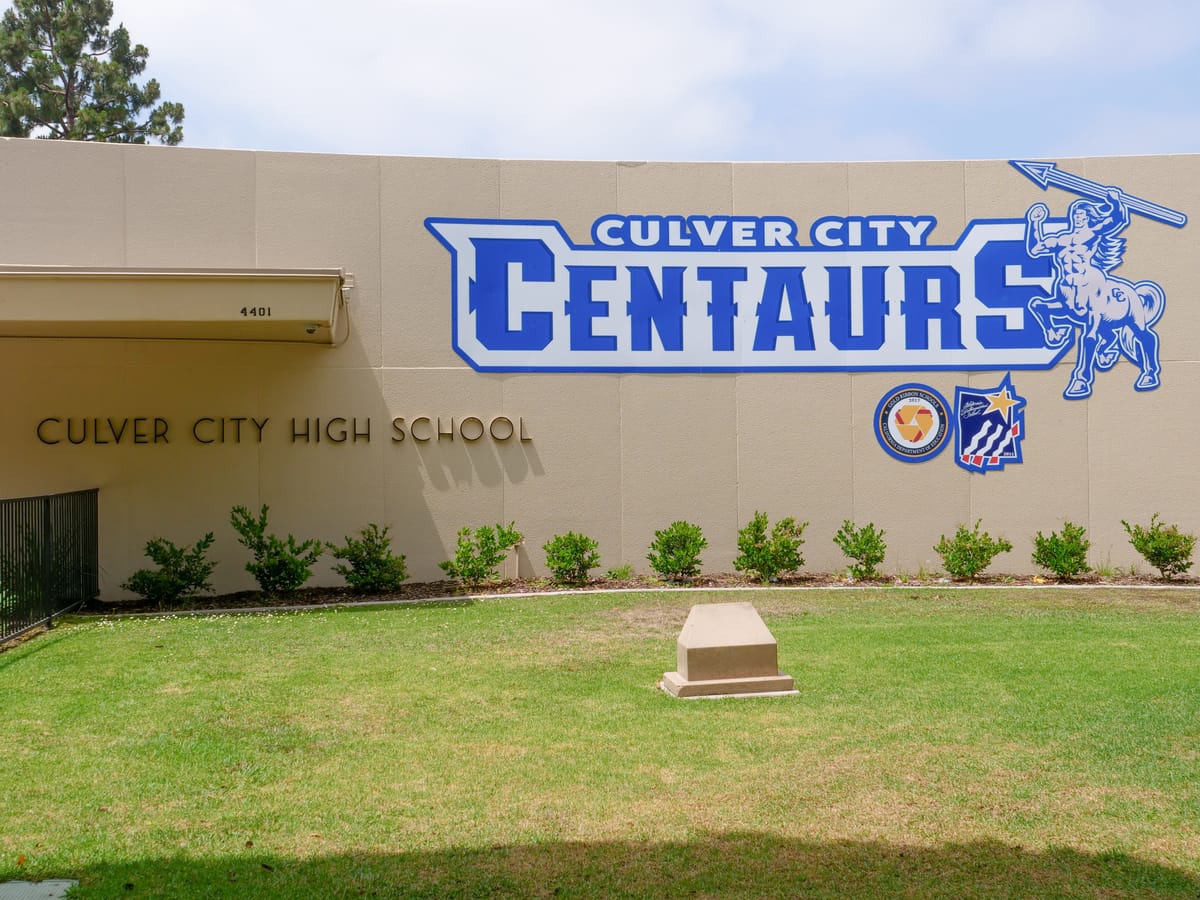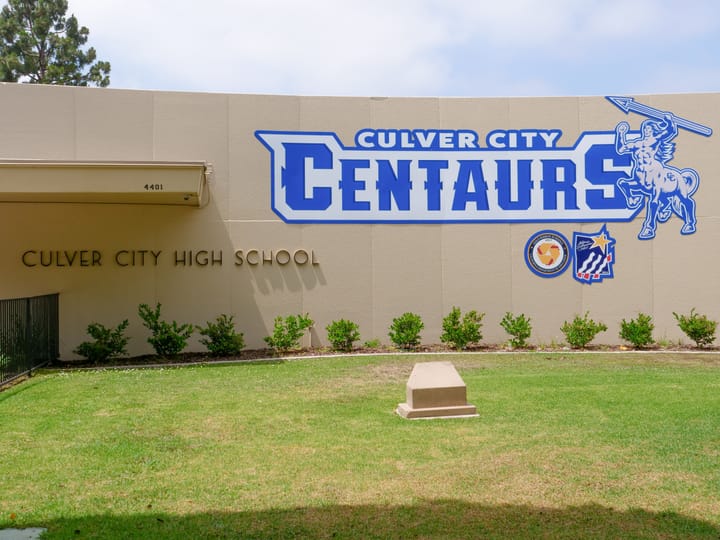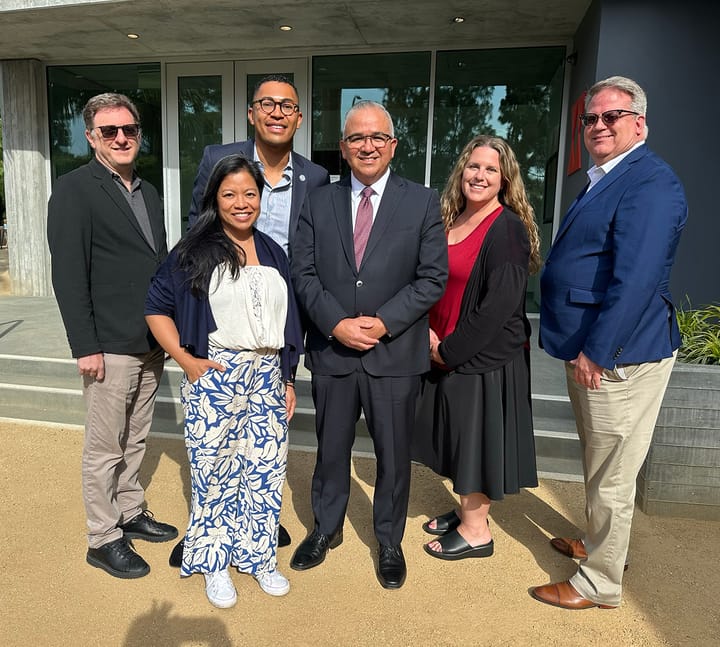Diving into CCUSD's 2025-26 Budget
The district's Board of Education approved its 2025-26 budget along with its Local Control Accountability Plan at its meeting on June 10.

The Culver City Unified School District approved its 2025-2026 Budget on June 10, cementing its spending and revenue expectations for the upcoming fiscal year. Along with that budget was an update to the Local Control Accountability Plan that continues to guide CCUSD's policies and spending.
Here's what you need to know about the budget:
Position Cuts lead to expenditure drop in face of LCFF shrinkage
The 2025-2026 CCUSD Budget reflects significant cuts to positions in the district, with a $6.4 million decrease in personnel expenditures. Expenditures related to employee salaries and benefits totaled $93.2 million, less than the $99.6 million in the last fiscal year but still representing 83.9% of total projected revenues or 82.9% of total projected spending in CCUSD.
That percentage is even greater when only considering unrestricted funds, with 94.9% of total unrestricted fund expenses related to personnel. Unrestricted fund expenditures for certificated personnel salaries are down 7%, and unrestricted classified salary expenditures are down almost 15% as part of austerity measures to balance a reeling budget.
Funding from the Local Control Funding Formula — money distributed to districts by California whose minimums are set by Proposition 98 — made up around 72% of the approximately $109.5 million in revenue CCUSD received in its 2024-25 adopted budget and will make up a similar portion of the budget this year. This formula is impacted by several factors, and it is reactive to changes in the State's budget each year.
This budget sees several revisions yearly, with the most recent in May. The Cost of Living Adjustment (COLA) — a revenue boost in the LCFF based on the increase in the cost of living over the prior year — is one of the most significant changes in May's Revision. While the COLA went from 2.43% to 2.3% in the last revision, K-12 funding as a whole remained mostly unimpacted.
But even the slightest changes influence a CCUSD budget already reeling from declining enrollment and the loss of COVID-19 funds. The district is receiving less money from the LCFF apportionment than last year, making a difficult situation that has already resulted in cuts even more so.
CCUSD is one of 24 school districts in California not to receive a Positive Certification on its Second Interim budget update, indicating the State has concerns about the district's ability to meet its financial obligations over the next three years.
District staff have cited declining district attendance as a significant factor in the current budget situation. The Average Daily Attendance (ADA) of district students determines part of the LCFF's allocations, and this number has dropped in recent years for CCUSD.
School Districts receive a certain amount of money per student based on grade level and other factors. The consequences of a marginal increase of just $239 per student from last year are even more pronounced in Culver City by the decreasing trend in ADA. District staff expect to be funded by the State for an ADA of 6,338 students, 464 lower than the 6,802 in 2023-24.
This loss of 464 students' worth of revenue represents a loss of almost $5.8 million, given the current ADA funding rate of $12,457 per student.
Special Education costs remain unpredictable
Another significant financial factor outside of local control is Special Education Funding. In addition to the money CCUSD invests in its special education programs, several regulations govern the pooling of funds to ensure that special education programs are accessible in all school districts.
One of these is the Special Education Local Plan Area (SELPA), a system established in 1977 that establishes groups of districts that pool money together to ensure special education programs are funded in all California schools.
Culver City is part of the Tri-Cities SELPA, which also includes the Santa Monica-Malibu Unified School District and Beverly Hills Unified School District. While CCUSD does see some revenue from the arrangement, its overall impact is expected to be a net loss of $380,154 in the 25-26 budget.
Costs for Special Education programs are among the most significant expenditures in the budget that are not connected to staffing. More than $15.6 million in expenses were earmarked as Special Education Program spending last year, and that number has jumped to more than $16.8 million in the 25-26 adopted budget.
"Special Education costs can be difficult to control and have a high potential for rapid escalation," the budget reads. "Satisfactory cost containment measures are vigorously pursued at every opportunity."
Much of the federal funding CCUSD receives is reserved for special education, with almost 62% of the $2.65 million of the federal revenue received coming as "Special Education Entitlement" from the Individuals with Disabilities Education Act.
This act was initially passed in 1975, reintroduced in 1990 under its current name, and reauthorized in 2004. It ensures that money from the federal government is distributed to local school districts to "make available a free appropriate public education to eligible children with disabilities."
With options limited, CCUSD looks to City for relief
Unlike cities and their governments, a school district's Board of Education is very limited in the options it has to supplement the district's revenues.
The primary method is by enacting parcel taxes, which are considered a "qualified special tax" under California law. These taxes can be levied on specific taxpayers for a restricted purpose, but a district's options are limited even under this umbrella.
Culver City already has a parcel tax in place through Measure K, which, according to budget documents, is expected to generate around $2.5 million in this fiscal year. The district can also rent and lease out its land and equipment to generate money, with revenue from this source expected to be around $2.8 million in 2025-26.
Aside from parcel taxes, a district's other primary option is to pursue a measure that authorizes the school district to sell bonds — paid back over time with interest through property taxes — to generate revenue. Measure E, approved by Culver City voters in the 2024 Election, authorized CCUSD to sell $358 million in bonds to fund school infrastructure improvements.
A less commonly used option is to pursue a special tax measure using the Mello-Roos Community Facilities Act of 1982. This act allows school districts to levy special taxes, but they must be used for capital or facility improvements. It also requires the establishment of Community Facilities Districts in the city where these Mello-Roos taxes would be collected.
Cities can also contribute to a school district's fund. District officials have argued that Culver City could do more to help its budget situation, citing the weight of contributions from nearby municipalities — including its fellow Tri-Cities SELPA members — to their city's school districts.
Santa Monica gives around $24 million to the Santa Monica/Malibu Unified School District annually, according to its 2025-27 Biennial Budget. Beverly Hills recently approved a Joint Powers Agreement that will see the city contribute more than $42 million from 2023 to 2026 to the Beverly Hills Unified School District, including $14.5 million projected in the 2025-26 fiscal year budget.
Culver City officially lists $992,500 as its contribution to CCUSD in their 2025-26 budget, mainly through funding the crossing guards and covering sewer and refuse fees. But many in the district argue it isn't nearly enough.
The council expressed a willingness to work with the district despite the city's precarious fiscal position at the June 9 council meeting where the city's budget was approved, but a disconnect in the communication process led to delays in the discussions.
City Manager John Nachbar said district officials had approached the city to inquire about potential financial assistance, but he told the council that it was not his or the city staff's decision to make.
Talks are happening now, with the city council beginning to meet with members of the Board of Education to discuss the potential for an increased boost in local revenue.
Click here to view the full 2025-26 CCUSD Budget.
LCAP Goals spread wide to address plethora of needs
Guiding the spending of the district's money is the Local Control Accountability Plan (LCAP), which serves a similar role in a school district to that of a city's General Plan. This plan has to be approved by the Department of Education, which has its own set of priorities which a District's LCAP goals must align with.
The current LCAP — effective from 2024-2027 — comprises seven overarching goals for CCUSD, each of which has its own initiatives and measure of success associated with them. The seven goals outlined in the 25-26 update to the LCAP are the same as in last year's document and are as follows:
- Equitable Access to High-Quality Curriculum: Provide equitable access to high-quality curriculum, materials, classroom instruction, and technology to foster engaging, creative, and meaningful learning experiences for all students while emphasizing growth towards meeting or exceeding standards to close the achievement and opportunity gaps.
- Multi-Tiered System of Support (MTSS)/Targeted Supports/Inclusive Practices: Implement targeted supports for students to optimize learning opportunities that include multiple pathways to demonstrate learning and remove barriers to student achievement regardless of their background, identity, or ability.
- Culturally Inclusive Learning and Safety: Ensure all schools are safe and provide culturally inclusive learning environments with systems that support positive mental health and social-emotional skills through student, staff, and family engagement.
- Enrichment and Personalized Learning: Provide students with personalized learning pathways encompassing leadership, career, technical, artistic, and athletic disciplines while facilitating accelerated growth through diverse educational opportunities.
- English Learners and Biliteracy: Help English Language Learners (ELLs) achieve comprehensive language proficiency and academic success — measurable by increased English language proficiency by at least one English Language Proficiency (ELP) level and improvement in English proficiency by 20% on local and State assessments — and promote multilingualism and multiculturalism through dual language and English Learner Programs fostering comprehensive language development and academic success.
- Attendance and Discipline: Provide comprehensive support services to address the academic, social-emotional, and basic needs of students experiencing homelessness, foster youth, and low-income students to reduce chronic absenteeism and suspension rates as reflected in state and local indicators.
- Black Student Achievement Plan: Create conditions conducive for Black/African American students to attain high levels of academic achievement by increasing progress-monitoring transparency and enhancing socio-emotional care and attention.
Each of these larger goals comes with its set of actions and metrics of success. Along with these actions are associated costs that come with their implementation, painting a more detailed picture of how funds in the budget will be spent.
For example, various goals in the LCAP illustrate a significant portion of CCUSD's Special Education Spending. Some of the most prominent costs include a projected $8,934,307 for Specialized Academic Instruction under Goal 2, $3,278,719 for a Continuum of Care for students with Individualized Education Plans (IEPs) under Goal 3, and $331,899 for assistive technology and supplemental curriculum for students with special needs under Goal 1.
At a recent study session, Board President Triston Ezidore emphasized the importance of one of the LCAP's most recent additions: the Black Student Achievement Plan. This plan focuses on addressing some of the issues faced disproportionately by the African American student community in Culver City.
Metrics of success identified in the plan include suspension rates, enrollment in Career Technical Education (CTE) classes, and AP Exam scores among African American students.
Decreasing the suspension rate is one of the primary avenues CCUSD is using to improve outcomes. About $260,000 of roughly $412,000 is tied to actions in the Black Student Achievement Plan focused on improving the school climate and decreasing disproportionate suspensions in the African American student group.
Click here to view the full LCAP document.




Comments ()